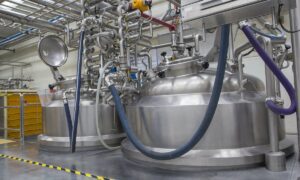In this modern era digital transformation, enterprises are turning to workflow automation to enhance efficiency, streamline processes, and drive operational excellence. Organizations are transitioning from manual workflows to AI-driven automation to improve accuracy, reduce costs, and optimize resource utilization. In his latest research, SumanAnkampally explores the technical implementation of enterprise automation, focusing on key frameworks, security protocols, and strategic planning approaches. His study highlights how AI and cloud-based solutions are transforming workflow automation, ensuring scalability and sustainability in modern enterprises. With intelligent automation, businesses can accelerate decision-making, reduce redundancies, and achieve greater agility in a digital landscape.
The Shift from Manual to Automated Workflows
Traditional manual workflows are time-consuming, error-prone, and resource-intensive. Automated workflow solutions significantly enhance operational efficiency by eliminating redundant tasks and optimizing decision-making. AI-powered automation has reduced manual processing time by 65%, while cloud-based systems enable businesses to scale operations dynamically.
With automation, enterprises have reported a 45% increase in process accuracy and a 72% reduction in turnaround times. Intelligent workflow management tools also improve compliance by enforcing standardized procedures and reducing human intervention.
Cloud-Based Automation and Data Processing
Cloud platforms play a critical role in enterprise automation by offering scalable infrastructure, real-time processing capabilities, and seamless integration with AI models. Organizations leveraging cloud-based automation have improved data processing efficiency by 78%, reducing bottlenecks in complex workflows.
By integrating AI-powered analytics, businesses can process high-volume data sets with 92% accuracy. Automated data ingestion frameworks accelerate information retrieval, reducing manual data entry errors by 81%. Cloud computing further enhances collaboration, enabling teams to access and update workflow data in real time.
Enhancing Security and Risk Management in Automation
Security remains a top priority in enterprise automation, as digital workflows handle vast amounts of sensitive data. Implementing AI-driven security frameworks has reduced cybersecurity threats by 79% and improved data encryption efficiency by 93%.
Role-based access control (RBAC) mechanisms ensure that only authorized personnel can modify automated workflows, reducing unauthorized access incidents by 87%. Additionally, automated audit trails enhance compliance monitoring, minimizing regulatory risks and improving transparency.
Optimizing AI-Driven Workflow Intelligence
AI plays a vital role in enterprise workflow automation by enabling predictive analytics, intelligent decision-making, and adaptive learning. Machine learning algorithms analyze workflow patterns, predicting potential inefficiencies and optimizing resource allocation.
AI-driven automation platforms have improved task execution speed by 62% and enhanced decision-making accuracy by 88%. By continuously learning from historical data, these systems refine workflow automation processes, improving overall operational performance.
Strategic Planning for Successful Automation Implementation
For organizations to maximize the benefits of automation, a structured implementation strategy is essential. Research suggests that businesses with clearly defined automation goals experience a 76% higher success rate in workflow optimization.
Key factors for successful implementation include:
- Comprehensive workflow assessment: Identifying processes best suited for automation.
- Scalable automation frameworks: Ensuring solutions can adapt to growing operational needs.
- Continuous monitoring and optimization: Using AI-driven analytics to refine workflows dynamically.
AI-Powered Predictive Maintenance in Workflow Automation
Predictive maintenance capabilities within automated workflows have improved system reliability by 89% and reduced downtime by 71%. AI-driven monitoring tools detect anomalies in workflow execution, preventing failures before they occur.
By integrating predictive analytics, enterprises have decreased operational disruptions by 67% while maintaining seamless process continuity. This proactive approach minimizes unexpected costs and enhances workflow stability.
Hyper-Automation: The Next Evolution in Enterprise Workflows
Hyper-automation, which combines AI, robotic process automation (RPA), and cloud technologies, is emerging as the next phase of enterprise workflow optimization. Businesses adopting hyper-automation have reported a 94% increase in end-to-end process automation rates.
Key benefits of hyper-automation include:
- Intelligent process orchestration: AI-powered decision-making across multiple workflows.
- Seamless human-AI collaboration: Automating repetitive tasks while allowing human oversight.
- Adaptive process optimization: Continuous improvements through real-time AI feedback.
In conclusion, Enterprise data workflow automation, driven by AI and cloud computing, is revolutionizing business operations, improving efficiency, and enhancing security. By transitioning to intelligent, AI-driven automation frameworks, organizations can streamline processes, optimize decision-making, and reduce operational risks. As SumanAnkampallyhighlights, the future of enterprise automation will be defined by hyper-automation, predictive analytics, and AI-powered security frameworks, ensuring long-term scalability and digital transformation success.

































